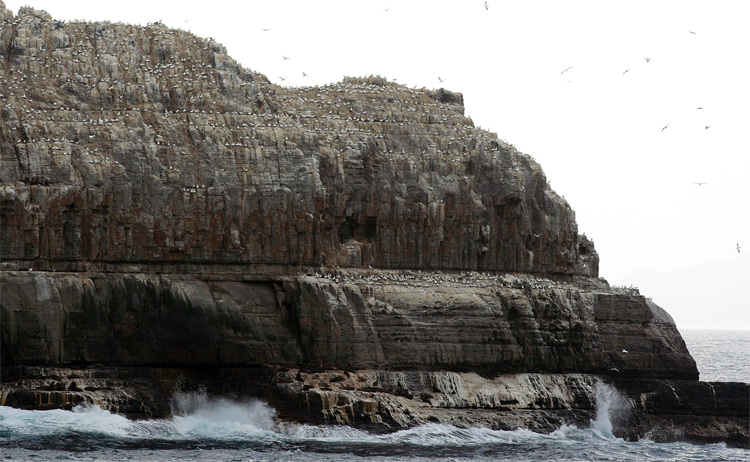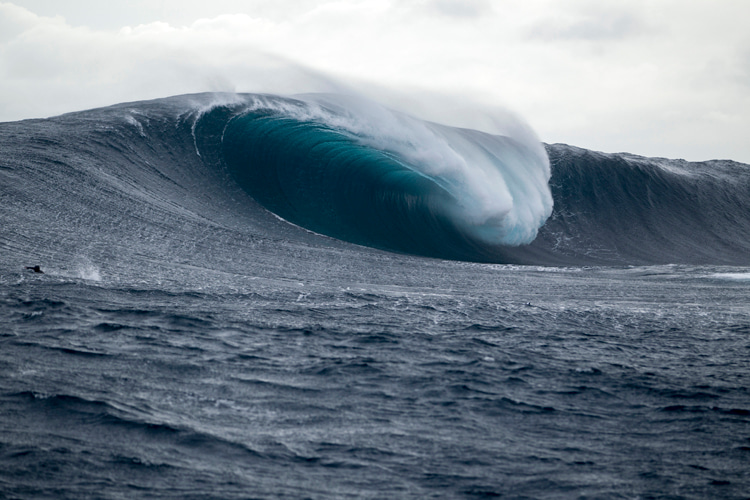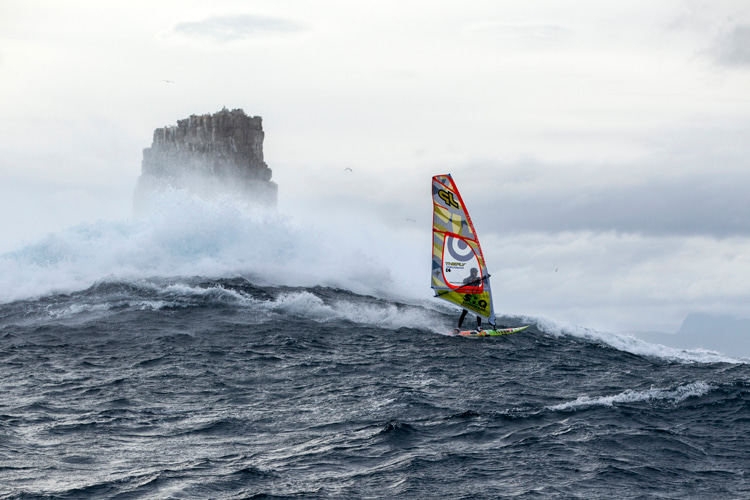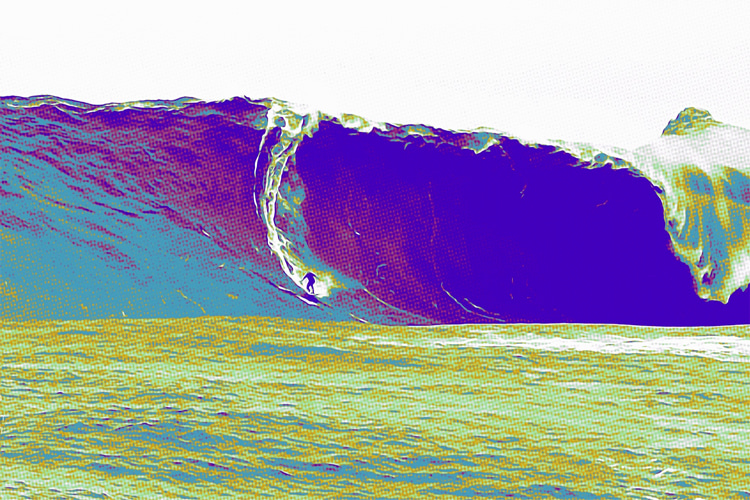Pedra Branca gained a fearsome reputation in the surfing world as one of the planet's most dangerous and remote waves. And it's clear why.
Similar to its sister wave, Shipstern Bluff, it's an offshore surf break with a fickle temperament and violent behavior.
Pedra Branca is the name of the small island located 16 miles (26 kilometers) southeast of Tasmania's South East Cape, Australia, in the icy Southern Ocean.
It separated from the Tasmanian mainland at least 15,000 years ago and is known for its wet and windy weather.
It is one of only two Australian places with a Portuguese name - Pedra Branca means "white rock," and Abrolhos means "thorn."
The Tasmanian islet is home to a thunderous slab wave that breaks to the left of the legendary Eddystone tower rock.
Those who dare to defy this spot are also aware that this is a cold water and great white shark-infested territory with little to no tolerance for the weak.
Over 20 fishermen died in this region.
Isolated and exposed to the infamous Roaring Forties storms, Pedra Branca is not the dreamy surfing destination you often see in magazines and social media.
The island is 890 feet long (270 meters) and 330 feet (100 meters) wide.
It is home to the rare Pedra Branca skink, a small lizard unique to the island and not found anywhere else in the world.
This Important Bird Area (IBA) is also a permanent seal colony.

The History of Pedra Branca
The place was discovered in 1642 by the Dutch explorer Abel Tasman, who was the first European to visit Tasmania.
The wave was first surfed in October 2008 by Marti Paradisis.
"We are lucky to be friends with an amazing skipper/captain down there named Dave Wyatt," Paradisis told Rusty Long, author of the book "The Finest Line."
"He had led us on many adventures, showing what our amazing coastline may have to offer. My friend, Nick 'Harry' Harris, started deck handing for Dave, and they would go down this rock to catch their cray bait."
"One trip, Harry came in and told me that he had seen Pedra breaking and couldn't believe how legitimate it was."
"I was skeptical, so I gave him my little Sony Handycam and asked him, next time he went out, to film a couple of waves."
"After his next trip, I watched the footage. It was only just breaking, but you could see there was bottom out there and definitely potential for some type of right-hander."
"From that moment onwards, we studied the weather patterns, looking for that moment where conditions aligned."
"Because it is so far out to sea, we looked for light winds and a super clean groundswell, and we realized finding the right day might take a while."
The truth is that the first expedition to the enigmatic surf break enjoyed humungous and perfect waves.
Tyler and James Hollmer-Cross, Tom Carroll, and Ross Clarke-Jones also joined the elite crew that got to know this Tasmanian beast better.
"It's apparently half a million kilograms of water pounding down and trying to cut us in half basically," Jones revealed at the time.
"I think it's moving about 100 kilometers per hour at some point. You know, on a wave that size, a 20-foot wave," added Carroll.
The inaugural session at Pedra Branca was blessed by glassy 30-to-40-foot surf, and the team surfed from dawn to 2 pm when the wind kicked in.

Physically and Mentally Stressful
The problem with big wave surfing in Pedra Branca is that you never know where the heavy mountains of water will break.
The lineup is constantly moving and requires constant ocean reading and full attention from surfers, jet ski pilots, and boat support crew.
Therefore, the spot is both physically and mentally stressful.
The nearby rock formations work like a magnet for the powerful south swells that travel from the Antarctic.
As wave energy hits the reef, a massive, thick-lipped right-hand wave is born before detonating on dark, shallow water.
"The take-off is a proper flat-bottom dredge, but it's so hard to pick the ones that don't shut down," underlines Marti Paradisis.
"Not only that, but it has this crazy backwash and a horrific injury tally."
"The power of Pedra is ridiculous. I've never experienced anything like it. The wave is traveling so quickly that sometimes it's impossible to catch it - even being towed."

A Wave of Consequence
In 2015, Alastair McLeod became the first windsurfer to ride the monster waves of Pedra Branca.
The 23-year-old sailboarder took off on a handful of 30-foot waves and later revealed, "It was without a doubt the most dangerous thing I've ever done but one of the most rewarding as well."
"The wind direction, swell direction, swell period, and tide all play a critical role in making this wave break a certain way."
"I would not want to encourage anyone to try this without serious local support. If you wipe out and break a mast or tear a sail, you're dead."
"There's no way to swim back to Tasmania through those waters."
The 2015 remake of "Point Break" (1991) featured footage of James Hollmer-Cross's near-death wipeout at Pedra Branca.
The Australian surfer burst his eardrum and got home with several tears and fractures. The accident earned him the movie's closing scene, though.
Only a few privileged have surfed Pedra Branca.
Apart from the pioneers, locals who ride the big wave spot include Alex Zawadzki, Brooke Phillips, Dustin Hollick, Mikey Brennan, Shaun Wallbank, and others.
